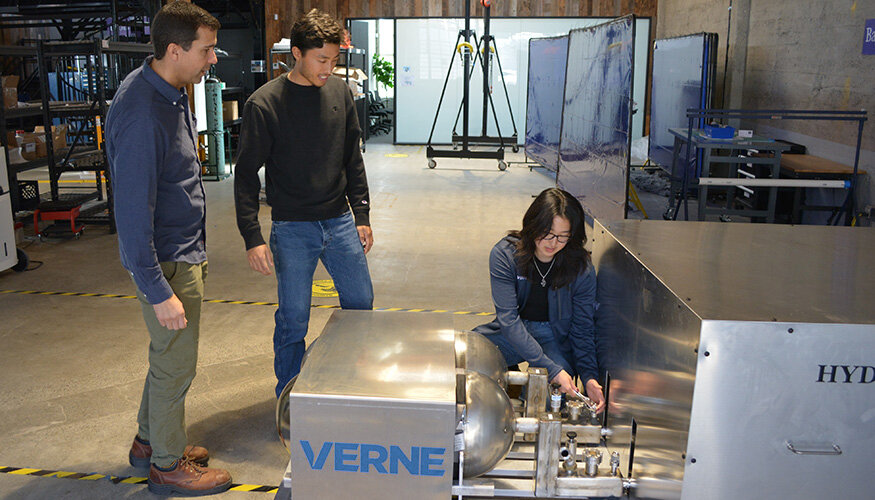Revolutionizing Hydrogen Storage: Cryo-Compressed Innovation Making Waves in Energy Sector
Key Ideas
- LLNL and Verne collaboration introduces cryo-compressed hydrogen, reducing energy use by 50% compared to traditional methods.
- The technology achieves high hydrogen densities without the need for expensive liquefaction, potentially bridging the gap in rising U.S. electricity demand.
- Verne's innovation could lower hydrogen transport costs by up to 40%, promoting competitiveness in various sectors and enabling a decentralized distribution model.
- Government-backed research and private-sector collaboration demonstrate a pathway for accelerating the hydrogen transition and driving real-world impact.
A groundbreaking partnership between Lawrence Livermore National Laboratory (LLNL) and energy startup Verne is set to revolutionize hydrogen storage. By introducing cryo-compressed hydrogen, the collaboration addresses the longstanding challenges associated with hydrogen storage efficiency and affordability. Traditional methods of storing hydrogen either lack energy density (as a gas) or involve costly liquefaction processes (liquid hydrogen). However, the new cryo-compression process cools and compresses hydrogen simultaneously, significantly reducing energy consumption by about 50% compared to conventional liquefaction techniques.
The relevance of this innovation is underscored by the projected 800 terawatt hours increase in U.S. electricity demand by 2030, driven by the growth of data centers and electric vehicles. By converting hydrogen into electricity using fuel cells or turbines, the technology has the potential to play a crucial role in meeting this escalating energy demand. Achieving hydrogen densities exceeding 60 grams per liter at temperatures as low as -314°F and 350 bar pressure, the cryo-compression process offers energy density comparable to liquefied hydrogen with substantially lower energy requirements.
Verne estimates that the adoption of this technology could lead to a significant reduction (up to 40%) in hydrogen transport costs, enhancing its competitiveness in sectors such as logistics, construction, ports, and warehousing. Moreover, the decentralized distribution model facilitated by this innovation allows for the establishment of smaller, local hubs instead of relying on large-scale liquefaction plants. This shift in distribution could bring hydrogen production closer to end-users, optimizing efficiency and accessibility.
The journey of this technology from the original concept developed in the late 1990s at LLNL by researcher Salvador Aceves to its commercialization by Verne in 2020 emphasizes the value of government-supported research in driving private-sector innovation. By working closely with LLNL to refine and scale the technology, Verne has demonstrated the potential for public-private partnerships to accelerate the hydrogen transition and generate tangible benefits for various industries. The collaborative efforts of LLNL, Verne, and key stakeholders illustrate a promising pathway towards a more sustainable, efficient, and accessible hydrogen economy.
Topics
Fuel Cells
Renewable Energy
Technology
Innovation
Sustainability
Transportation
Research
Energy Storage
Commercialization
Latest News
